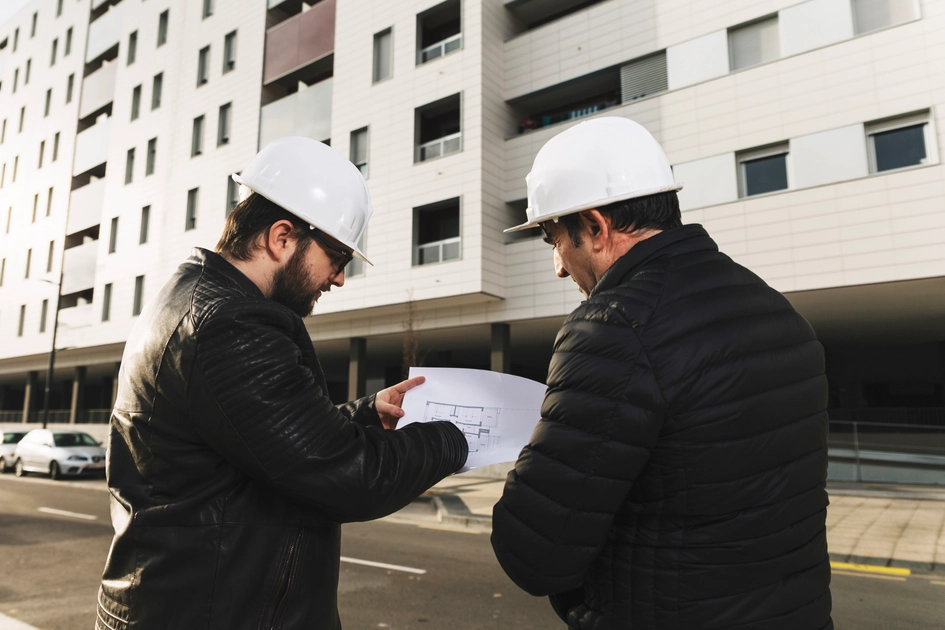You’re about to make one of the biggest investments of your life, and building inspections are your first line of defence against costly property issues. When you schedule a building inspection, your inspector will thoroughly examine the property’s structural integrity, safety hazards, and potential defects that could impact your investment. From the foundation to the roof, these professionals conduct a comprehensive assessment to help you make an informed decision about your purchase. Your inspection report will provide detailed insights into the property’s condition, enabling you to avoid dangerous structural issues and negotiate with confidence.
Table of Contents
What Building Inspectors Check During Their Visit
Building inspectors conduct a thorough examination of your property’s accessible areas, following a systematic checklist to ensure no critical elements are missed. Your inspection covers both major structural components and detailed interior/exterior assessments to provide a comprehensive evaluation of the property’s condition.
Major Structural Components
The inspection begins with an assessment of your property’s fundamental elements. Inspectors examine the foundation, load-bearing walls, roof structure, and support beams for signs of deterioration or damage. They’ll identify any structural defects that could compromise the building’s integrity, including foundation cracks, sagging rooflines, or compromised support systems.
Interior and Exterior Building Inspections
Your inspector will methodically evaluate both inside and outside elements of the property. This includes checking walls, windows, doors, floors, and ceilings for damage or deterioration. The exterior assessment covers siding, gutters, drainage systems, and roof conditions.
The interior inspection probes deeper into specific areas like plumbing fixtures, electrical outlets, and ventilation systems. Inspectors document any signs of water damage, pest infestations, or safety hazards. They’ll test doors and windows for proper operation, examine floor stability, and assess ceiling conditions for potential leaks or structural issues. Your report will highlight both immediate concerns and potential future problems that may need addressing.
The True Value of a Comprehensive Building Inspection Report
A detailed building inspection report serves as your property’s health record, revealing both visible and potential issues that could affect your investment. The document becomes a powerful negotiating tool, potentially saving you thousands of dollars in repair costs or purchase price adjustments. Your inspection report also creates a baseline for tracking the property’s condition over time.
Understanding the Reports
Building inspection reports follow a standardised format, making them easy to navigate and understand. Each section details specific areas of the property, complete with photographic evidence and professional annotations. You’ll find clear descriptions of defects, their severity levels, and recommended actions for addressing identified issues.
Long-Term Benefits for Property Buyers
Your building inspection report becomes a valuable reference document throughout your property ownership. The detailed findings help you plan maintenance schedules, budget for future repairs, and maintain your property’s value. This documentation also proves invaluable when dealing with insurance claims or future property sales.
The report’s insights guide your property maintenance decisions for years to come. You can prioritise repairs based on severity, prevent minor issues from escalating into major problems, and maintain accurate records of your property’s condition. Many property owners save significant amounts by addressing potential problems early, rather than waiting for emergency repairs.
Unpacking the Building Inspection Process
Steps Involved from Start to Finish
The building inspection process follows a systematic approach, starting with an initial property walkthrough. Your inspector will document findings using specialised tools and cameras, moving methodically from the exterior to interior spaces. The assessment typically takes 2-3 hours for an average-sized home, culminating in a detailed report delivered within 24 hours. This thorough evaluation ensures no accessible area goes unchecked.
Key Areas Covered During Inspection
Building inspectors examine specific zones, including the roof cavity, subfloor space, exterior walls, and internal rooms. Structural elements receive particular attention, with inspectors checking for signs of movement, cracking, water damage, and pest activity. The property’s drainage, ventilation, and overall building integrity form core components of the assessment.
Each inspection zone requires different expertise and tools. Roof spaces are examined for proper insulation, ventilation, and structural integrity. Ground-level inspections focus on foundation stability, rising damp, and drainage efficiency. Interior assessments cover walls, ceilings, floors, and visible plumbing fixtures. Safety hazards like asbestos or unstable structures are flagged immediately, while minor maintenance issues are documented for future reference. Your inspector will also identify any non-compliant building work that could affect the property’s value or safety.
Why You Should Never Skip a Building and Pest Inspection
Skipping a building and pest inspection can cost you tens of thousands of dollars in repairs and remediation. Professional inspectors detect issues that remain invisible to the untrained eye, from structural weaknesses to pest infestations that could compromise your entire investment. Your mortgage lender may even require an inspection report before approving your loan, making this step necessary in the property purchasing process.
Identifying Hidden Termite Activity
Termites cause over $5 billion in property damage annually across Australia, often operating undetected behind walls and under floors. Professional inspectors use specialised equipment like thermal imaging cameras and moisture meters to detect termite activity long before visible damage appears. This early detection can save you from catastrophic structural failure and expensive repairs.
The Impact of Pest Infestation on Property Value
Properties with documented pest problems typically sell for 20-25% below market value. Beyond the immediate repair costs, untreated pest infestations can lead to long-term structural issues, compromised building integrity, and health risks for occupants. Your property insurance may also be affected, with some policies excluding coverage for pest-related damage.
Real estate data shows that homes with a history of pest problems take significantly longer to sell and often face multiple price reductions. Buyers who discover undisclosed pest issues after purchase may have grounds for legal action, potentially leading to costly litigation and mandatory remediation expenses. Professional pest inspection certificates, however, can protect both buyers and sellers by documenting the property’s condition at the time of sale.
Common Defects Found in Building Inspections in Melbourne
Melbourne’s unique climate and building styles create specific patterns of property issues that building inspectors regularly encounter. From Victorian-era homes to modern builds, inspectors typically identify rising damp, termite damage, and roof deterioration as common problems. Your inspection report will detail these issues, helping you understand the property’s true condition and potential repair costs.
Safety Hazards to Watch For
Building inspectors routinely check for electrical faults, asbestos presence, and unstable structures that could compromise your safety. Your inspection will reveal exposed wiring, non-compliant balustrades, and other immediate risks. Melbourne’s older homes often present additional challenges with outdated electrical systems and materials that don’t meet current safety standards.
Signs of Structural Issues and Drainage Problems
Foundation movement and water damage rank among the most serious defects in Melbourne properties. Your inspector will look for cracked walls, uneven floors, and sagging rooflines that indicate structural concerns. Poor drainage can lead to subsidence, rising damp, and mould growth, particularly in properties built on Melbourne’s clay soil base.
Melbourne’s varying soil conditions and seasonal weather patterns significantly impact building foundations. Your inspector will examine the property for signs of differential settlement, water pooling around foundations, and inadequate surface drainage systems. Clay soil expansion and contraction during wet and dry periods can cause substantial structural movement, making proper drainage assessment important for preventing future damage.
Conclusion
You can see that building inspections provide a detailed assessment of readily accessible areas in your potential property purchase. While your inspection covers significant structural elements, it’s important to understand its limitations. You’ll need to conduct additional research or request special-purpose inspections for areas not included in the standard assessment. By knowing what your building inspection does and doesn’t cover, you can make informed decisions about your property investment and determine when to seek specialised expertise for specific concerns.
FAQs
What do building inspectors look for during a pre-purchase inspection?
During a pre-purchase building inspection, qualified building inspectors will check the condition of both the interior and exterior of the property. They look for signs of structural issues, defects, and safety hazards that may require repairs, providing you with peace of mind before you buy a property.
How does a plumbing system inspection benefit homeowners?
A comprehensive inspection of the plumbing system can reveal potential issues like leaks or drainage problems that may not be immediately visible. Engaging a professional building inspector to assess these areas ensures that you are aware of any necessary repairs, saving you from future headaches and costs.
What is included in a building and pest inspection report?
A building and pest inspection report includes detailed findings on the structural integrity of the property and any signs of pest infestation, such as termites. This inspection will cover essential aspects, ensuring compliance with local building codes and offering valuable insights for property buyers in Melbourne or Sydney.





